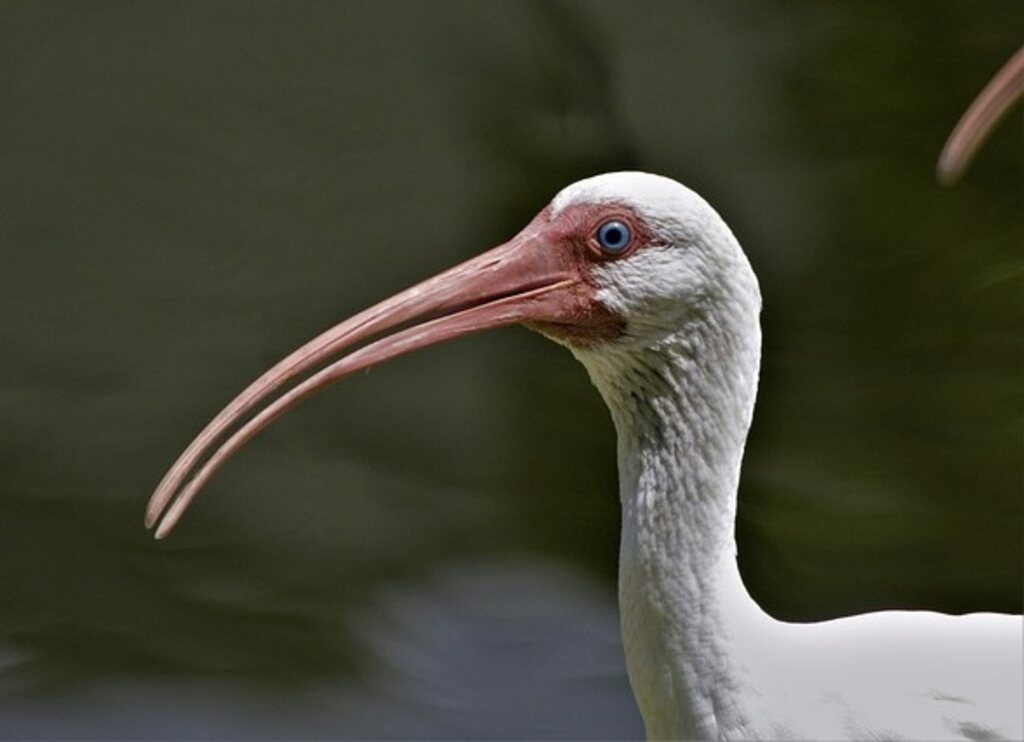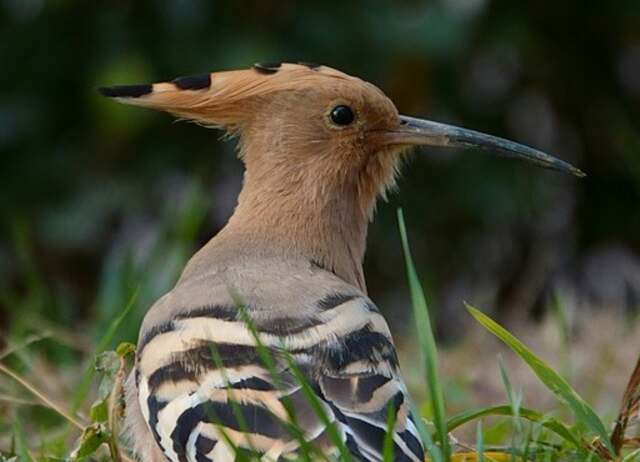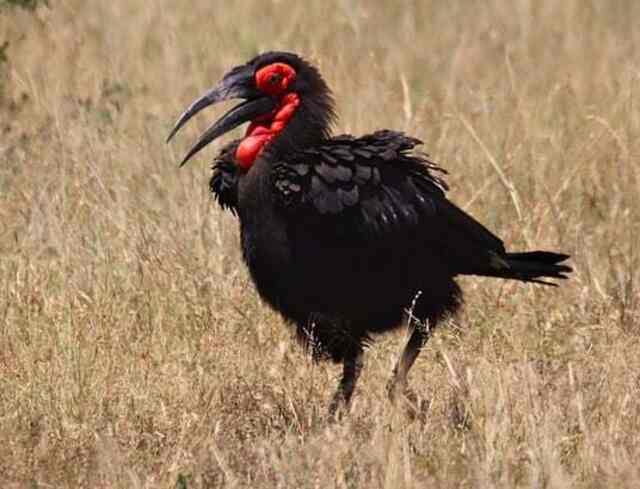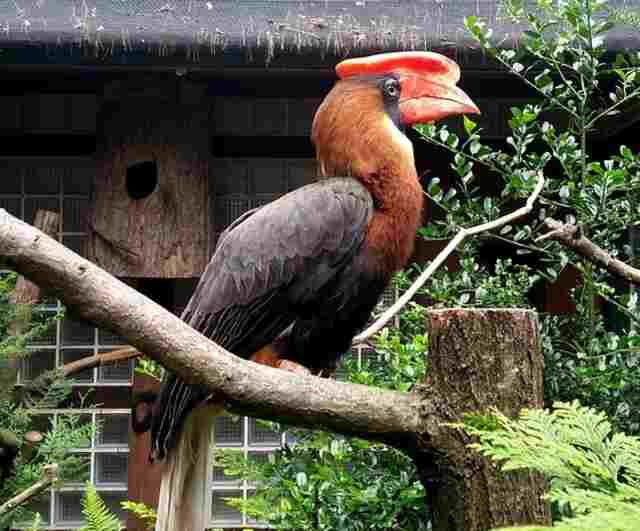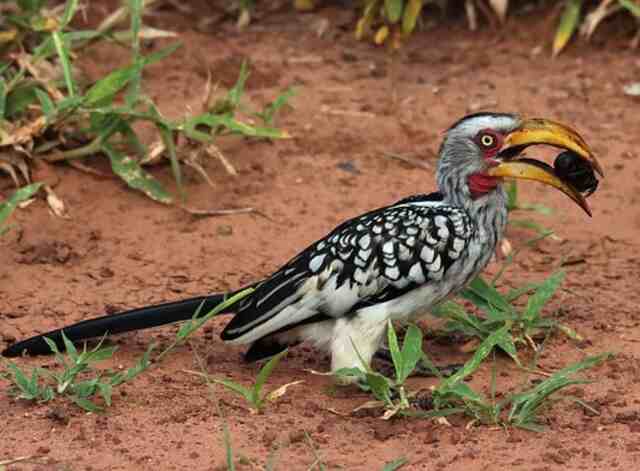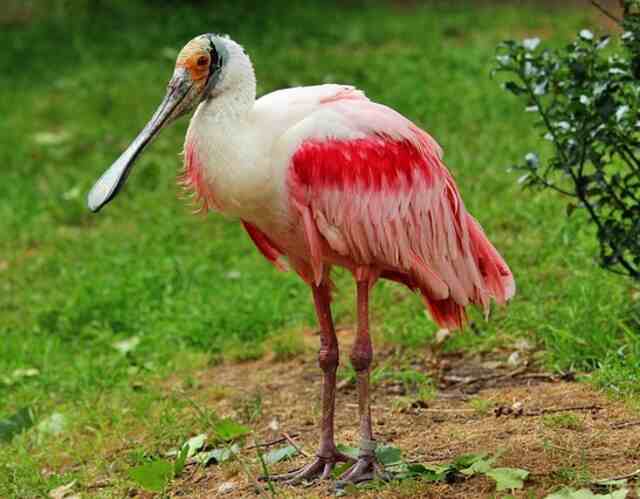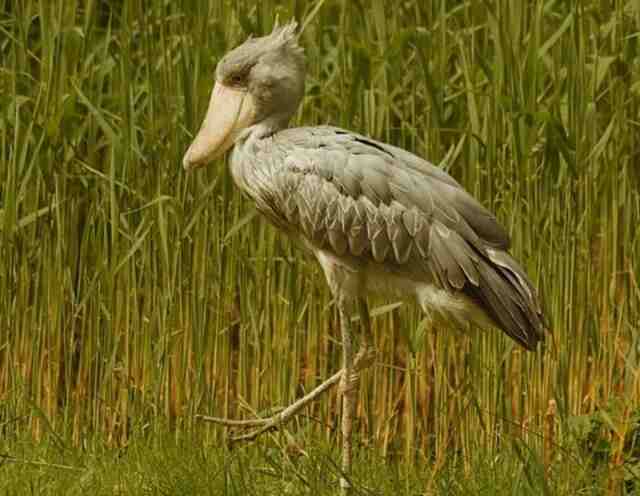Welcome to our exploration of birds with big beaks! In this journey, we’ll uncover the unique adaptations and fascinating stories of 21 bird species known for their remarkable beaks. Join us as we dive into how these specialized tools shape their lives and survival in diverse habitats worldwide.
Table of Contents
- 1 Why Birds with Long Beaks Are Unique?
- 2 Why Birds Have Long Beaks?
- 3 Functions of Long Beaks
- 4 Types of Birds with Big Beaks
- 4.1 American White Pelican
- 4.2 Toco Toucan
- 4.3 Southern Ground Hornbill
- 4.4 Rhinoceros Hornbill
- 4.5 Keel-billed Toucan
- 4.6 Collared Aracari
- 4.7 Hudsonian Whimbrel
- 4.8 Southern Yellow-billed Hornbill
- 4.9 Marabou Stork
- 4.10 American Flamingo
- 4.11 Sandhill Crane
- 4.12 Great Blue Heron
- 4.13 Roseate Spoonbill
- 4.14 Glossy Ibis
- 4.15 Long-billed Curlew
- 4.16 Atlantic Puffin
- 4.17 Jabiru
- 4.18 Shoebill
- 4.19 Black Skimmer
- 4.20 American Avocet
- 4.21 Pied Avocet
- 5 Conclusion
- 6 Author
Why Birds with Long Beaks Are Unique?
Birds with long beaks are among the most fascinating creatures in the animal kingdom. These birds have evolved specialized structures that allow them to perform a variety of functions, from capturing prey to attracting mates. The long beak is a unique adaptation that has helped these birds survive and thrive in a variety of habitats, from the rainforest to the desert.
Why Birds Have Long Beaks?
Birds have long beaks for a variety of reasons. One of the primary reasons is to enable them to feed on a specific type of food. For example, a pelican has a long, broad beak that it uses to scoop up fish from the water.
Toucans have long, narrow beaks that they use to pluck fruit from trees. The length and shape of the beak vary depending on the bird’s diet and the type of environment it lives in. In addition to feeding, long beaks also have other functions that help these birds survive in the wild.
Functions of Long Beaks
Camouflage
One of the functions of long beaks is camouflage. Birds such as the Snipe and Woodcock have long beaks that are used to probe the soil for food. The beak has a dark coloration that helps to blend in with the surrounding soil, making it difficult for predators to spot them. Some birds also have beaks with patterns that mimic the environment they live in, providing an additional layer of camouflage.
Communication
Long beaks can also be used for communication. Some birds have evolved unique beak shapes and sizes that are used to produce specific vocalizations. For example, the Australian Reed Warbler has a long, thin beak that it uses to produce complex songs that are critical for attracting mates and defending its territory.
Attracting Mates
Long beaks are also used to attract mates. Birds such as the Flamingo have long, curved beaks that are used in courtship displays. During mating season, male flamingos will use their beaks to perform intricate displays, such as synchronized head movements, to attract females.
Thermoregulation
Finally, long beaks can also play a role in thermoregulation. Birds such as the Shoebill and the Jabiru have large, flat beaks that they use to dissipate heat. This helps to regulate their body temperature, particularly in hot environments.
Types of Birds with Big Beaks
American White Pelican
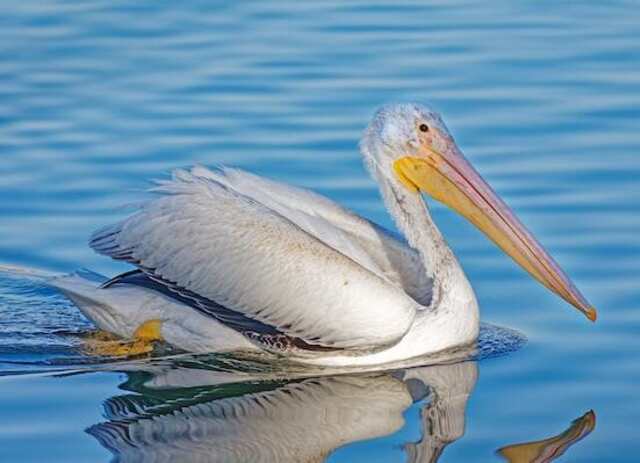
The American White Pelican is a large, white bird with a wingspan of up to 9 feet. They can be found across North America, from Canada to Mexico. These birds inhabit wetlands, lakes, and rivers, and feed on fish, which they catch by plunging their long, broad beaks into the water.
The beak can hold up to 3 gallons of water, and the pelican uses it to strain out the fish, which are then swallowed whole. The long beak also serves other functions, such as cooling the bird in hot weather and attracting mates during breeding season. Overall, the American White Pelican is a unique and fascinating bird with many interesting adaptations.
Toco Toucan
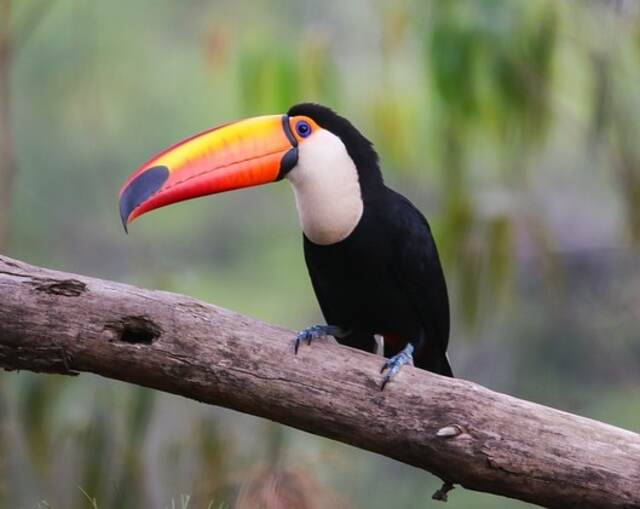
The Toco Toucan is a fascinating bird found in South America. It is known for its distinctive long, colorful beak that can reach up to 8 inches in length. This beak is used primarily for feeding, as the toucan’s diet consists mainly of fruit. The toucan’s habitat is typically tropical and subtropical forests, and they are distributed throughout the Amazon Basin and parts of Brazil, Argentina, and Paraguay.
In addition to feeding, the Toco Toucan also uses its beak for thermoregulation, communication, and attracting mates. Its beak is also important for balancing its large head and body, making it a unique and fascinating bird to observe in the wild.
Southern Ground Hornbill
The Southern Ground Hornbill is a large bird native to Africa, with a wingspan of up to 2 meters and weighing up to 6 kilograms. They are mostly found in savannas and woodlands across sub-Saharan Africa. Their diet consists of insects, small mammals, reptiles, and birds, which they catch with their sharp, hooked beaks.
The hornbill’s long, strong beak is used for digging up food, breaking open nests, and as a tool for defense. In addition to their feeding functions, the beak also serves as a means of communication, producing deep, booming calls to signal their presence to others. These unique characteristics make the Southern Ground Hornbill a fascinating and important member of African ecosystems.
Rhinoceros Hornbill
The Rhinoceros Hornbill is a big bird that can be found in Southeast Asia. It has a distinctive red and yellow beak that is shaped like a rhinoceros horn, which gives the bird its name. The Rhinoceros Hornbill is found in primary rainforests, mangrove forests, and other wooded areas. It consumes fruit, insects, and small animals.
The long beak of the Rhinoceros Hornbill is used to catch prey, as well as to attract mates and for communication. It also serves as a thermoregulatory device, helping the bird to regulate its body temperature in the hot and humid environments where it lives. The Rhinoceros Hornbill is considered a keystone species and plays an important role in the ecology of its habitat.
Keel-billed Toucan
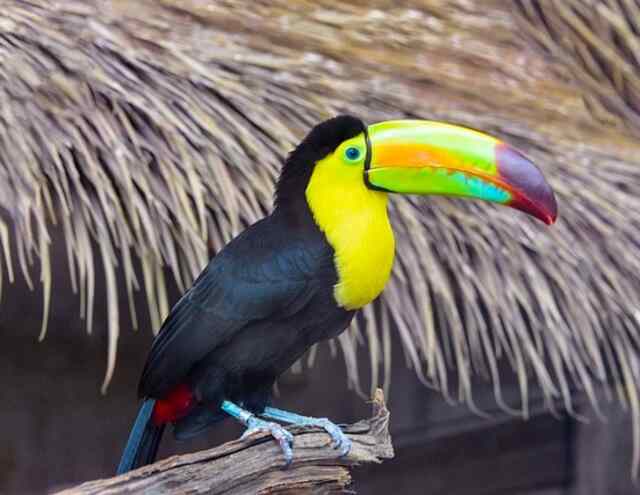
The Keel-billed Toucan is a stunning bird found in the rainforests of Central and South America. Known for its brightly colored feathers and large, distinctive beak, the Keel-billed Toucan feeds primarily on fruit and insects. Their beak is not only visually striking, but also serves important functions such as reaching deep into tree holes to access food, thermoregulation, and attracting mates through vocalization.
They are found in a range of forest habitats, from lowland to montane forests. They can be found throughout the region spanning from southern Mexico all the way to northern Colombia and Venezuela. With its unique appearance and important role in the ecosystem, the Keel-billed Toucan is an iconic symbol of the tropical rainforest.
Collared Aracari
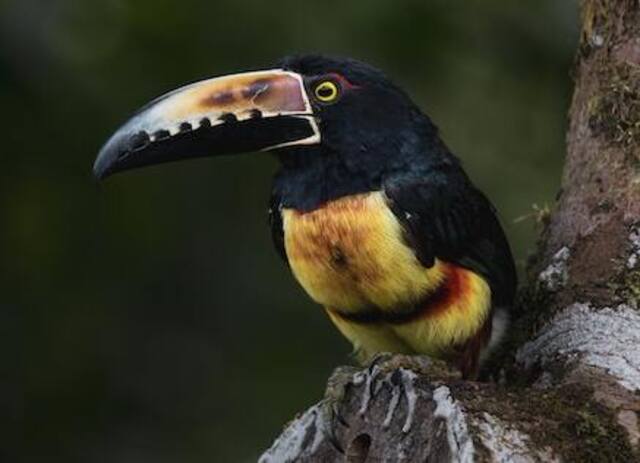
The Collared Aracari is a small toucan species found in Central and South America. They have a distinct appearance with a black collar around their neck and a brightly colored beak. Their distribution range spans from southern Mexico to northern Argentina, and they can be found in a variety of habitats, including rainforests and savannas. The Collared Aracari has a varied diet that includes fruit, insects, and small vertebrates.
Their long, curved beaks are used to reach deep into tree cavities to extract insects and small prey. They also play a role in thermoregulation, as they can dissipate heat through their beaks in hot environments. Overall, the Collared Aracari is a fascinating bird with unique adaptations that allow it to thrive in its environment.
Hudsonian Whimbrel

The Hudsonian Whimbrel is a unique and fascinating bird that inhabits the Arctic and sub-Arctic regions of North America. It is a large, long-legged bird with a long, curved beak that is used for probing the ground for food, such as insects and crustaceans. The bird’s distinctive beak also helps it to extract mollusks from the sand and mud, making it a highly specialized feeder.
The Hudsonian Whimbrel is known for its long-distance migration, traveling from its breeding grounds in the Arctic to its wintering grounds in South America. Overall, the Hudsonian Whimbrel is a remarkable example of the adaptability and resilience of birds in harsh environments.
Southern Yellow-billed Hornbill
The Southern Yellow-billed Hornbill is a fascinating bird found in the savannas of Southern Africa. This bird is known for its distinctive long, curved yellow beak, which it uses to catch insects and small reptiles. The Southern Yellow-billed Hornbill is found across a range of habitats, including grasslands, woodlands, and savannas.
It feeds primarily on insects and small animals, but will also eat fruit and seeds. The long beak of the Southern Yellow-billed Hornbill is used for catching prey, as well as for thermoregulation and communication. This unique adaptation has helped these birds survive and thrive in their environments, making them an important part of the African ecosystem.
Marabou Stork
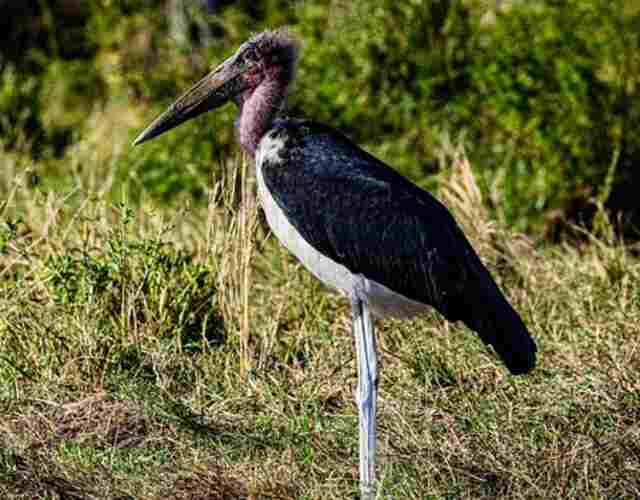
The Marabou Stork is a fascinating bird known for its unique appearance and behavior. It is one of the largest storks in the world, with a wingspan of up to 3.7 meters and can weigh up to 9 kg. It is found in sub-Saharan Africa and is commonly seen near rivers and wetlands. The Marabou Stork has adapted to a scavenging lifestyle, feeding on a variety of dead animals and waste.
It has a bald head and neck, which helps it avoid getting covered in blood and other fluids while feeding. The Marabou Stork has a long, thick beak that it uses to tear apart carcasses and extract food. The beak also serves a thermoregulatory function, helping the bird dissipate heat in hot environments. Overall, the Marabou Stork is an impressive bird with a unique set of adaptations that have allowed it to thrive in its environment.
American Flamingo
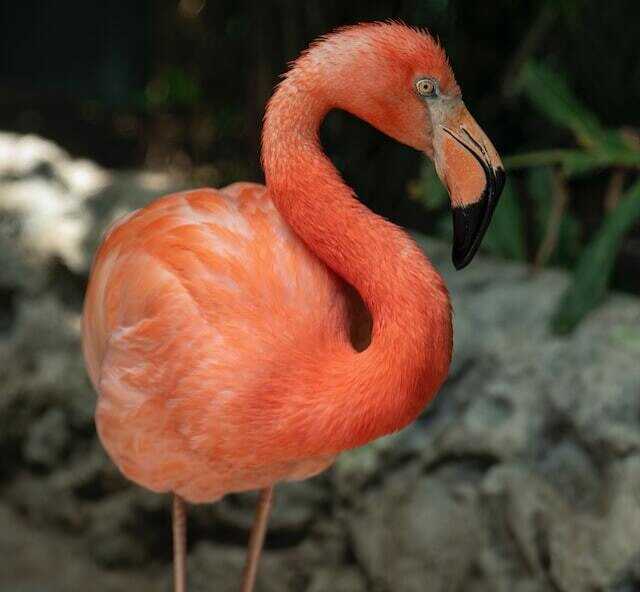
The American Flamingo is a fascinating bird known for its distinctive pink color and long, curved beak. It is found in the Caribbean, Central, and South America, and is most commonly found in shallow, brackish water habitats such as lagoons, salt pans, and estuaries. Their diet primarily consists of small crustaceans, algae, and plankton that they filter from the water using their long, specialized beaks.
The beak serves a variety of functions, including thermoregulation, attracting mates during courtship displays, and communication. The beak also contains specialized sensors that allow the flamingo to detect prey in the water, making it a vital tool for their survival.
Read more: 25 Facts About Flamingos That Will Blow Your Mind!
Sandhill Crane
The Sandhill Crane is a large bird found in North America, known for its distinctive red forehead and long beak. They are typically found in grasslands, wetlands, and agricultural fields. Their diet consists mainly of seeds, grains, and small animals, which they scoop up with their long, pointed beaks. These beaks serve multiple functions, including communication, attracting mates, and probing for food.
They also aid in thermoregulation, particularly in hot environments. The Sandhill Crane is a migratory bird, with populations ranging from Alaska to Florida. They are known for their distinctive trumpet-like calls, and their impressive courtship dances, which involve complex movements and vocalizations.
Read more: 52 Fun Facts About Sandhill Cranes (Test Your Knowledge!)
Great Blue Heron
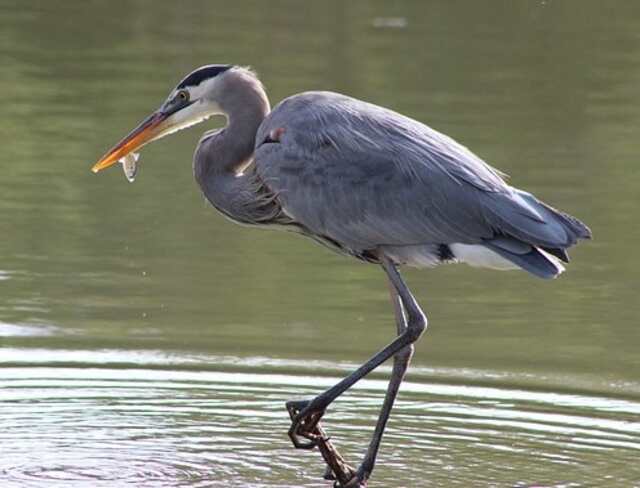
The Great Blue Heron is a majestic wading bird found throughout North and Central America. They have a distinctive long beak that they use to spear fish and other aquatic prey, making them highly skilled hunters. They are also known for their tall, slender bodies and long legs, which help them wade through shallow water.
Great Blue Herons can be found in a variety of habitats, including wetlands, marshes, and rivers, and their range extends from Canada to South America. Their diet consists mainly of fish, but they also eat amphibians, reptiles, and small mammals. The long beak serves multiple functions, including catching prey, thermoregulation, and communication during courtship displays.
Read more: 20 Great Blue Heron Facts That Will Astonish You!
Roseate Spoonbill
The Roseate Spoonbill is a unique and fascinating bird found primarily in the Americas. Its most distinctive feature is its long, spoon-shaped bill, which it uses to sift through shallow water for small fish, crustaceans, and insects. These birds are found in a variety of wetland habitats, including mangrove swamps, marshes, and coastal lagoons. They have a bright pink plumage and a bald head, which helps to keep their feathers clean while foraging.
The Roseate Spoonbill is also known for its wide distribution range, spanning from the southern United States to Central and South America. The long bill of the Roseate Spoonbill serves several functions, including feeding, thermoregulation, and communication. These birds are truly a marvel of nature, and a sight to behold in their natural habitat.
Glossy Ibis
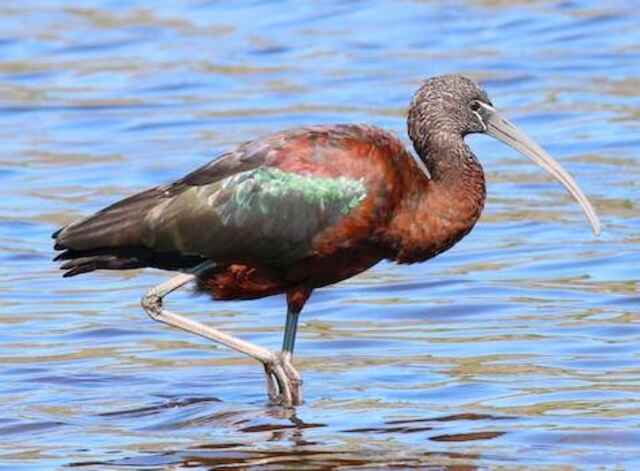
The Glossy Ibis is a unique bird species that can be found across the world, from Africa to Europe, Asia, and the Americas. They are known for their distinctive long, curved beaks, which they use to feed on a variety of prey, including fish, frogs, and insects. Their preferred habitat includes wetlands, marshes, and swamps, and they are often found in large flocks. The Glossy Ibis has a dark, glossy plumage, which provides excellent camouflage in their habitat.
The long beak of the Glossy Ibis serves several functions, including feeding, thermoregulation, and communication during mating displays. The beak is used to probe the soil and water for food, and its curved shape allows the bird to reach into tight spaces to capture prey. Overall, the Glossy Ibis is a fascinating bird species that has adapted to thrive in its unique wetland habitat.
Long-billed Curlew
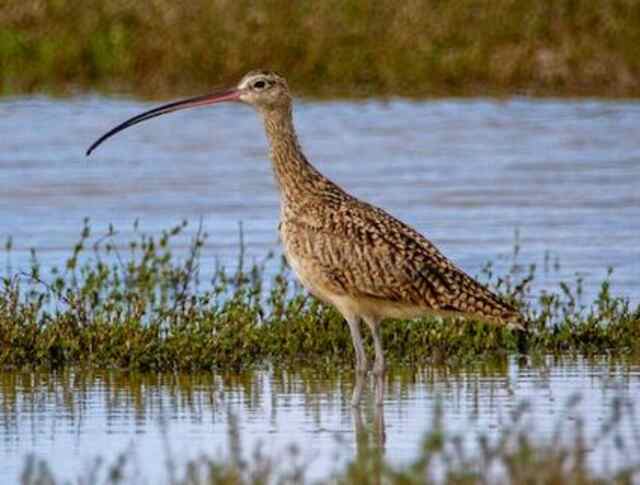
The Long-billed Curlew is a unique bird species found in North America. Its most distinctive feature is its long, curved bill, which is used to probe deep into the soil for prey. These birds inhabit grasslands, wetlands, and shorelines, and have a range that extends from Alaska to Mexico.
Their diet consists of insects, crustaceans, and small animals that they capture using their long bills. The Long-billed Curlew’s beak also plays a role in courtship displays, as males use it to create intricate displays to attract females. Overall, the Long-billed Curlew’s long bill is a critical adaptation that helps it survive in its unique habitat and fulfill its various ecological functions.
Atlantic Puffin

The Atlantic Puffin is a small seabird with a distinctive appearance, featuring a black and white body, orange legs, and a brightly colored beak. They are found in the North Atlantic, with breeding colonies along the coasts of Norway, Iceland, the UK, and Canada. Puffins inhabit rocky cliffs and islands, where they nest in burrows or crevices.
They primarily feed on small fish, caught by diving from the air with their powerful wings and using their long, sharp beaks to capture prey. The long beak also serves a thermoregulatory function, helping to dissipate heat on hot days. During breeding season, the beak takes on a brighter color, used in courtship displays and as a signal of health and fitness.
Jabiru
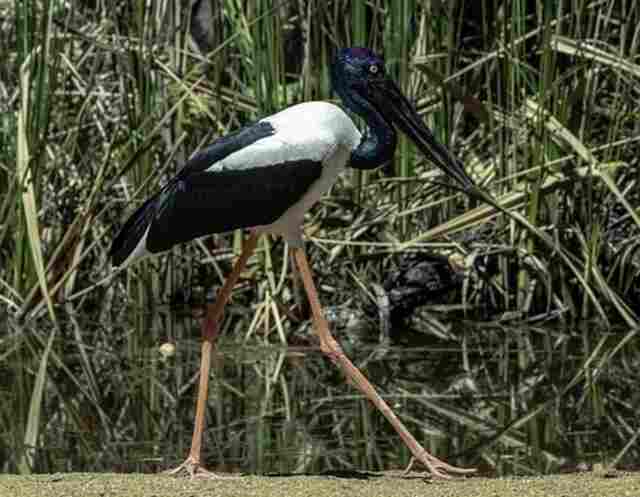
The Jabiru is a large stork species found in the wetlands of Central and South America. They are known for their distinctive long, flat beaks which they use for foraging in shallow waters for prey such as fish, frogs, and insects. The beak also plays a role in thermoregulation, helping to dissipate heat in hot environments.
Jabirus are typically found in marshes, swamps, and floodplains, and their distribution range stretches from Mexico to Argentina. They also play an important role in their ecosystems by helping to control populations of prey species. Overall, the Jabiru is a fascinating bird with unique adaptations that allow it to thrive in its wetland habitat.
Shoebill
The Shoebill is a fascinating bird species found in central and East Africa, with a distinct appearance due to its large, flat beak that is shaped like a shoe. This beak is used for a variety of functions, including catching prey such as fish and amphibians, regulating body temperature, and even communicating with other Shoebills.
They primarily inhabit swamps, marshes, and wetlands, and are known for their solitary nature. Despite their large size and unique appearance, little is known about the Shoebill’s behavior and ecology in the wild. They are considered a vulnerable species due to habitat loss and hunting, highlighting the importance of conservation efforts for this incredible bird.
Black Skimmer
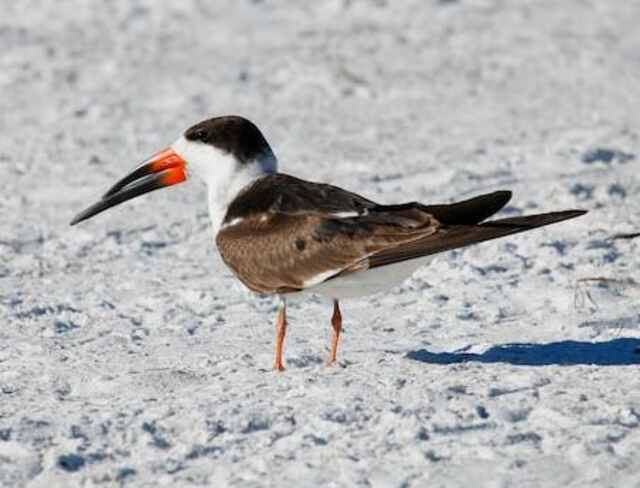
The Black Skimmer is a unique and fascinating bird found in coastal regions of the Americas. With its distinctive black and white plumage and long, slender beak, the Black Skimmer is perfectly adapted to its environment. They are primarily found along the coasts of North and South America, from the United States to Argentina. They prefer to live in open habitats such as beaches, sandbars, and mudflats. Their long beaks are used to catch fish, which is their primary diet.
The lower mandible is longer than the upper, allowing them to skim the water’s surface and catch fish. The beak also serves other functions, such as thermoregulation and attracting mates. Overall, the Black Skimmer is a fascinating and unique bird that is perfectly adapted to its coastal habitat.
American Avocet
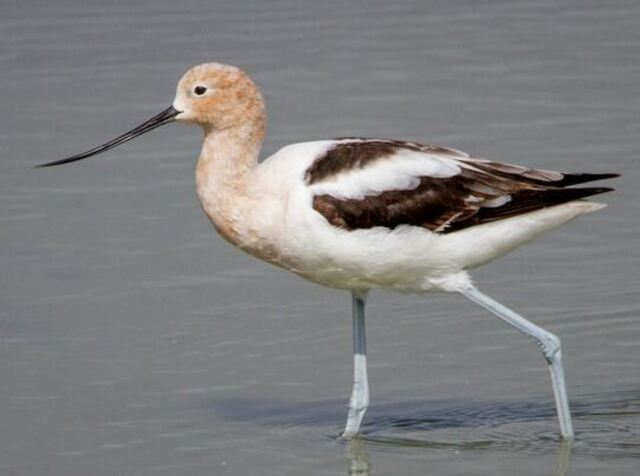
The American Avocet is a unique shorebird with a distinct long, upturned beak. It is found in the western United States and Mexico, primarily in saline or alkaline wetlands such as salt flats, marshes, and shallow ponds. They feed on small invertebrates, such as crustaceans and insects, which they scoop up with their long beaks.
The beak is also used to probe the mud and water for prey. The American Avocet’s long beak serves multiple functions, including thermoregulation, communication, and attracting mates. It is a fascinating species that has adapted to its specialized habitat and diet with its unique beak.
Pied Avocet
The Pied Avocet is a unique bird species known for its striking black and white plumage and distinctive long, upturned beak. These birds are found across Europe, Asia, and Africa and can be found in a variety of habitats, including salt flats, lagoons, and marshes. Their long beaks are perfectly adapted for their feeding habits, which primarily consist of probing in mud or shallow water for small invertebrates and crustaceans.
The upturned beak allows them to reach into the mud and filter out food with their specialized tongue. In addition to feeding, their long beaks also serve other functions, including courtship displays and thermoregulation. Overall, the Pied Avocet is a fascinating bird with unique adaptations that allow it to thrive in a variety of environments.
Conclusion
In conclusion, the world of birds with big beaks is truly fascinating. From the delicate and precise beaks of finches and warblers to the massive and powerful bills of pelicans and toucans, each bird has evolved its own unique adaptation to survive and thrive in its environment.
The functions of these beaks are incredibly diverse, ranging from hunting and feeding to communication and courtship displays. By exploring the world of avian adaptations, we gain a deeper appreciation for the incredible diversity and complexity of the natural world. The big-beaked birds are just one example of the amazing adaptability and ingenuity of life on our planet.
Related Post: 15 Small Brown Birds with Long Beaks (A Natural Marvel!)

